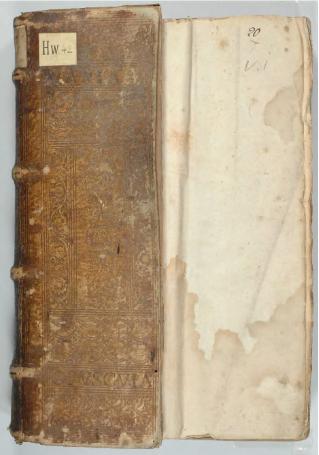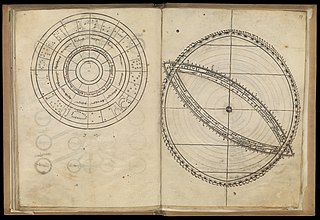Related Research Articles

Hipparchus was a Greek astronomer, geographer, and mathematician. He is considered the founder of trigonometry, but is most famous for his incidental discovery of the precession of the equinoxes. Hipparchus was born in Nicaea, Bithynia, and probably died on the island of Rhodes, Greece. He is known to have been a working astronomer between 162 and 127 BC.

Claudius Ptolemy was an Alexandrian mathematician, astronomer, astrologer, geographer, and music theorist, who wrote about a dozen scientific treatises, three of which were of importance to later Byzantine, Islamic, and Western European science. The first is the astronomical treatise now known as the Almagest, although it was originally entitled the Mathēmatikē Syntaxis or Mathematical Treatise, and later known as The Greatest Treatise. The second is the Geography, which is a thorough discussion on maps and the geographic knowledge of the Greco-Roman world. The third is the astrological treatise in which he attempted to adapt horoscopic astrology to the Aristotelian natural philosophy of his day. This is sometimes known as the Apotelesmatika but more commonly known as the Tetrábiblos, from the Koine Greek meaning "Four Books", or by its Latin equivalent Quadripartite.

The zodiac is a belt-shaped region of the sky that extends approximately 8° north and south of the ecliptic, which is the apparent path of the Sun across the celestial sphere over the course of the year. The orbital paths of the Moon and major planets are within the belt of the zodiac.
Sexagesimal, also known as base 60 or sexagenary, is a numeral system with sixty as its base. It originated with the ancient Sumerians in the 3rd millennium BC, was passed down to the ancient Babylonians, and is still used—in a modified form—for measuring time, angles, and geographic coordinates.

The Almagest is a 2nd-century mathematical and astronomical treatise on the apparent motions of the stars and planetary paths, written by Claudius Ptolemy in Koine Greek. One of the most influential scientific texts in history, it canonized a geocentric model of the Universe that was accepted for more than 1,200 years from its origin in Hellenistic Alexandria, in the medieval Byzantine and Islamic worlds, and in Western Europe through the Middle Ages and early Renaissance until Copernicus. It is also a key source of information about ancient Greek astronomy.
In astronomy and celestial navigation, an ephemeris is a book with tables that gives the trajectory of naturally occurring astronomical objects as well as artificial satellites in the sky, i.e., the position over time. Historically, positions were given as printed tables of values, given at regular intervals of date and time. The calculation of these tables was one of the first applications of mechanical computers. Modern ephemerides are often provided in electronic form. However, printed ephemerides are still produced, as they are useful when computational devices are not available.

Georg von Peuerbach was an Austrian astronomer, poet, mathematician and instrument maker, best known for his streamlined presentation of Ptolemaic astronomy in the Theoricae Novae Planetarum. Peuerbach was instrumental in making astronomy, mathematics and literature simple and accessible for Europeans during the Renaissance and beyond.

Gerard of Cremona was an Italian translator of scientific books from Arabic into Latin. He worked in Toledo, Kingdom of Castile and obtained the Arabic books in the libraries at Toledo. Some of the books had been originally written in Greek and, although well known in Byzantine Constantinople and Greece at the time, were unavailable in Greek or Latin in Western Europe. Gerard of Cremona is the most important translator among the Toledo School of Translators who invigorated Western medieval Europe in the twelfth century by transmitting the Arabs' and ancient Greeks' knowledge in astronomy, medicine and other sciences, by making the knowledge available in Latin. One of Gerard's most famous translations is of Ptolemy's Almagest from Arabic texts found in Toledo.

Abū ʿAbd Allāh Muḥammad ibn Jābir ibn Sinān al-Raqqī al-Ḥarrānī aṣ-Ṣābiʾ al-Battānī, usually called al-Battānī, a name that was in the past Latinized as Albategnius, was an astronomer, astrologer and mathematician, who lived and worked for most of his life at Raqqa, now in Syria. He is considered to be the greatest and most famous of the astronomers of the medieval Islamic world.

Johannes de Sacrobosco, also written Ioannes de Sacro Bosco, later called John of Holywood or John of Holybush, was a scholar, monk, and astronomer who taught at the University of Paris.

The Toledan Tables, or Tables of Toledo, were astronomical tables which were used to predict the movements of the Sun, Moon and planets relative to the fixed stars. They were a collection of mathematic tables that describe different aspects of the cosmos including prediction of calendar dates, times of cosmic events, and cosmic motion.

Abū al-Wafāʾ Muḥammad ibn Muḥammad ibn Yaḥyā ibn Ismāʿīl ibn al-ʿAbbās al-Būzjānī or Abū al-Wafā Būzhjānī was a Persian mathematician and astronomer who worked in Baghdad. He made important innovations in spherical trigonometry, and his work on arithmetic for businessmen contains the first instance of using negative numbers in a medieval Islamic text.

Abu al-Saqr Abd al-Aziz ibn Uthman ibn Ali al-Qabisi, generally known as Al-Qabisi,, and sometimes known as Alchabiz, Abdelazys, Abdilaziz, was a Muslim astrologer, astronomer, and mathematician.

The Alfonsine Tables, sometimes spelled Alphonsine Tables, provided data for computing the position of the Sun, Moon and planets relative to the fixed stars.
Johannes de Muris, or John of Murs, was a French mathematician, astronomer, and music theorist best known for treatises on the ars nova musical style, titled Ars nove musice.

Campanus of Novara was an Italian mathematician, astronomer, astrologer, and physician who is best known for his work on Euclid's Elements. In his writings he refers to himself as Campanus Nouariensis; contemporary documents refer to him as Magister Campanus; and the full style of his name is Magister Campanus Nouariensis. He is also referred to as Campano da Novara, Giovanni Campano or similar. Later authors sometimes applied the forename Johannes Campanus or Iohannes Campanus.

During the Renaissance, great advances occurred in geography, astronomy, chemistry, physics, mathematics, manufacturing, anatomy and engineering. The collection of ancient scientific texts began in earnest at the start of the 15th century and continued up to the Fall of Constantinople in 1453, and the invention of printing allowed a faster propagation of new ideas. Nevertheless, some have seen the Renaissance, at least in its initial period, as one of scientific backwardness. Historians like George Sarton and Lynn Thorndike criticized how the Renaissance affected science, arguing that progress was slowed for some amount of time. Humanists favored human-centered subjects like politics and history over study of natural philosophy or applied mathematics. More recently, however, scholars have acknowledged the positive influence of the Renaissance on mathematics and science, pointing to factors like the rediscovery of lost or obscure texts and the increased emphasis on the study of language and the correct reading of texts.

The Prutenic Tables, were an ephemeris by the astronomer Erasmus Reinhold published in 1551. They are sometimes called the Prussian Tables after Albert I, Duke of Prussia, who supported Reinhold and financed the printing. Reinhold calculated this new set of astronomical tables based on Nicolaus Copernicus' De revolutionibus orbium coelestium, the epochal exposition of Copernican heliocentrism published in 1543. Throughout his explanatory canons, Reinhold used as his paradigm the position of Saturn at the birth of the Duke, on 17 May 1490. With these tables, Reinhold intended to replace the Alfonsine Tables; he added redundant tables to his new tables so that compilers of almanacs familiar with the older Alfonsine Tables could perform all the steps in an analogous manner.

Johannes Stadius or Estadius, was a Flemish astronomer, astrologer, and mathematician. He was one of the important late 16th-century makers of ephemerides, which gave the positions of astronomical objects in the sky at a given time or times.
John of Lignéres or Johannes de Lineriis was a French astronomer who wrote several works on the calculation of moon, sun, and planetary positions. Many of his works are confounded with the works of similar named Parisian astronomer collaborators and students including Johns of Murs, John of Sicily, John of Saxony, and John of Montfort. His works were important in importing Arabic astronomical calculations into European traditions.
References
- 1 2 3 4 Glick, Thomas; Ivesey, Steven; Wallis, Faith (29 September 2005). Medieval Science Technology and Medicine: An Encyclopedia. Routledge. p. 292. ISBN 140394766X.
- ↑ Introductorium ad judicia astronomiae, Herbermann, Charles, ed. (1913). . Catholic Encyclopedia . New York: Robert Appleton Company.
- ↑ Lynn Thorndike, A History of Magic and Experimental Science, vol. 3, (New York: Columbia University Press, 1934), pp. 262-6.
- ↑ Thorndike, Lynn (1 July 1934). A History of Magic and Experimental Science: & 4. Fourteenth and Fifteenth Centuries . Columbia University Press. pp. 258–259. ISBN 0231087977.
- ↑ Grendler, Paul (29 September 2004). The Universities of Italian Renaissance. Johns Hopkins University Press. pp. Chapter 12. ISBN 0801880556.
- ↑ Bolt, Marvin; Trimble, Virginia; Bracher, Katherine; Williams, Thomas; Hockey, Thomas (5 January 2009). The Biographical Encyclopedia of Astronomers. Springer. pp. 598–600. ISBN 978-0387351339.
- ↑ Kusukawa, Sachiko. "Astronomical Tables". Starry Messenger. University of Cambridge . Retrieved 3 June 2014.
- ↑ Lynn Thorndike, A History of Magic and Experimental Science, vol. 3, (New York: Columbia University Press, 1934), pp. 253-8, 267.